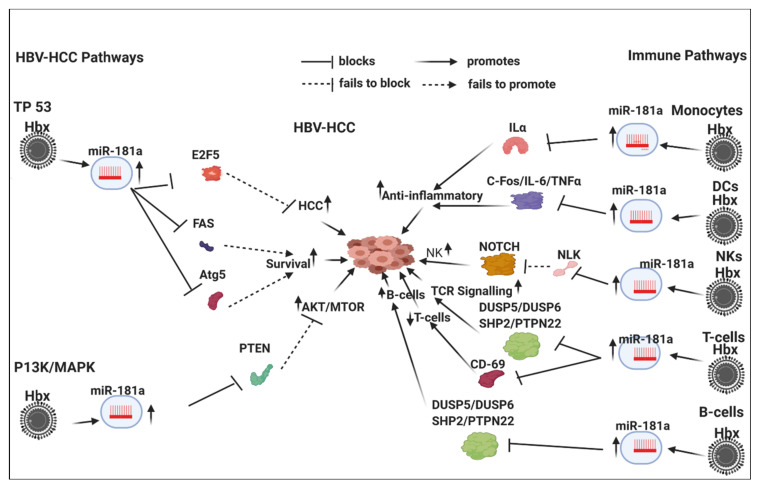Figure 3.
HBx-induced mIR-181a in HBV-HCC immune pathways: This HBx-upregulated miRNA promotes cell proliferation in the TP53 pathway by repressing cell cycle controls like E2F5 and it exerts an anti-apoptotic influence by repressing FAS/ATG5 to promote cell survival; in the P13K/MAPK this upregulated miRNA also promotes carcinogenesis by promoting MTOR signaling as a result of repressing PTEN. In the innate immune pathways, this miRNA promotes an anti-inflammotory response by repressing Ilα and C-FOS/IL-6/TNFα in monocytes and DCs respectively; in NKs this miRNA upregulates NKs by repressing NLK, which then fails to repress NOTCH induced induction of NKs; in T-cells this miRNA represses DUSP5/6/SHP2/PTPN22 to increase TCR signaling induced stimulation of T-cells; however, this upregulated miRNA also represses T-cell production by reducing CD69 expression; in early stage leukopiesis this miRNA can also promote B-cell to T-cell differentiation in favor of B-cells by repressing DUSP5/6/SHP2/PTPN22.

